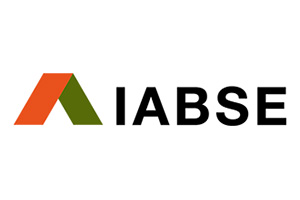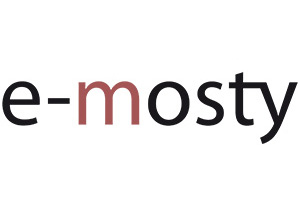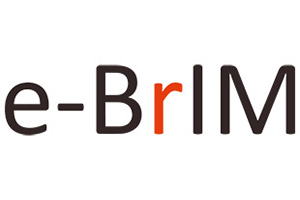-
Qi, Xingke / Zhang, Jianchao / Wang, Jun: Analysis of vibration suppression effect of parallel combined damping NES system on non-smooth system. In: International Journal of Structural Stability and Dynamics.
https://doi.org/10.1142/s021945542650118x
-
Yang, Zijian / Wang, Jun / Zhang, Jianchao / Shen, Yongjun: Research on dynamics characteristics of grounded damping nonlinear energy sink. In: International Journal of Structural Stability and Dynamics.
https://doi.org/10.1142/s0219455425501561
-
Chang, Baotian / Zhang, Jianchao / Geng, Yingying / Li, Jiarui / Miao, Doudou / Zhang, Nan (2024): Machine learning enabled film pressure sensor to identify surface contacts: An application in surface transmission of infectious disease. In: Building Simulation, v. 17, n. 6 (March 2024).
https://doi.org/10.1007/s12273-024-1132-7
-
Zhang, Jianchao / Zheng, Yu / Hong, Shuxian / Xing, Feng / Dong, Biqin (2023): Investigation of size-independent fracture energy of cementitious materials by quantifying the deformation energy. In: Journal of Building Engineering, v. 76 (October 2023).
https://doi.org/10.1016/j.jobe.2023.107299
-
Dong, Biqin / Fang, Guohao / Liu, Yuqing / Dong, Peng / Zhang, Jianchao / Xing, Feng / Hong, Shuxian (2017): Monitoring reinforcement corrosion and corrosion-induced cracking by X-ray microcomputed tomography method. In: Cement and Concrete Research, v. 100 (October 2017).
https://doi.org/10.1016/j.cemconres.2017.07.009
-
Wu, Yang / Zhang, Bingjian / Zhang, Jianchao / Zhai, Kuanrong / Luo, Li (2022): Weathering Characteristics of White Marble Relics Around the Hall of Supreme Harmony (Taihe Dian) in the Forbidden City. In: KSCE Journal of Civil Engineering, v. 27, n. 2 (November 2022).
https://doi.org/10.1007/s12205-022-1108-z
-
Yao, Tengfei / Han, Sen / Gong, Xin / Zhang, Jianchao / Chang, Xiaojuan / Zhang, Zhuang (2022): Performance evaluation of a polyurethane-urea binder for asphalt pavement groove-filling. In: Construction and Building Materials, v. 315 (January 2022).
https://doi.org/10.1016/j.conbuildmat.2021.125734
-
Wu, Yang / Shen, Jian / Zhang, Jianchao / Zhang, Bingjian (2022): Environmental Factor Accelerate the Deterioration of Tuff Stone Heritage: A Case Study of a Stone House in Southeast China. In: Buildings, v. 12, n. 2 (18 January 2022).
https://doi.org/10.3390/buildings12020188
-
Hong, Shuxian / Kuang, Chuan / Zhang, Jianchao / Dong, Biqin (2022): Segmentation Method for Enhancing the Continuity and Integrality of Microcracks in Concrete Fracture XCT Image. In: Journal of Materials in Civil Engineering (ASCE), v. 34, n. 3 (March 2022).
https://doi.org/10.1061/(asce)mt.1943-5533.0004114
-
Zhang, Jianchao / Chen, Zhan / Wang, Jun / Hu, Yufei (2021): Dynamic Characteristics of Non-smooth Suspension System Under Fractional-order Displacement Feedback. In: DYNA, v. 96, n. 3 (1 May 2021).
https://doi.org/10.6036/10125
-
Hong, Shuxian / Liu, Peng / Zhang, Jianchao / Kuang, Chuan / Dong, Biqin / Luo, Qiling / Liu, Wei (2020): Interior fracture analysis of rubber-cement composites based on X-ray computed tomography and digital volume correlation. In: Construction and Building Materials, v. 259 (October 2020).
https://doi.org/10.1016/j.conbuildmat.2020.119833
-
Hong, Shuxian / Kuang, Chuan / Zhang, Jianchao / Hou, Dongshuai / Zhang, Jinrui / Liu, Laibao / Dong, Biqin (2020): Visual analysis for microscopic cracking propagation of rubberized concrete. In: Construction and Building Materials, v. 265 (December 2020).
https://doi.org/10.1016/j.conbuildmat.2020.120599
-
Fang, Guohao / Liu, Yuqing / Qin, Shaofeng / Ding, Weijian / Zhang, Jianchao / Hong, Shuxian / Xing, Feng / Dong, Biqin (2018): Visualized tracing of crack self-healing features in cement/microcapsule system with X-ray microcomputed tomography. In: Construction and Building Materials, v. 179 (August 2018).
https://doi.org/10.1016/j.conbuildmat.2018.05.193
-
Zhang, Jianchao / Seet, Boon-Chong / Lie, Tek (2015): Building Information Modelling for Smart Built Environments. In: Buildings, v. 5, n. 1 (January 2015).
https://doi.org/10.3390/buildings5010100
-
Zhang, Jianchao / Dong, Biqin / Hong, Shuxian / Teng, Xiaojuan / Li, Gui / Li, Weiwen / Tang, Luping / Xing, Feng (2019): Investigating the influence of fly ash on the hydration behavior of cement using an electrochemical method. In: Construction and Building Materials, v. 222 (October 2019).
https://doi.org/10.1016/j.conbuildmat.2019.06.046
-
Zhang, Jianchao / Hong, Shuxian / Dong, Biqin / Tang, Luping / Lin, Chen / Liu, Zhichao / Xing, Feng (2019): Water distribution modelling of capillary absorption in cementitious materials. In: Construction and Building Materials, v. 216 (August 2019).
https://doi.org/10.1016/j.conbuildmat.2019.05.023
-
Dong, Biqin / Wu, Yusheng / Teng, Xiaojuan / Zhuang, Zhaotao / Gu, Zhentao / Zhang, Jianchao / Xing, Feng / Hong, Shuxian (2019): Investigation of the Cl− migration behavior of cement materials blended with fly ash or/and slag via the electrochemical impedance spectroscopy method. In: Construction and Building Materials, v. 211 (June 2019).
https://doi.org/10.1016/j.conbuildmat.2019.03.198
-
Fang, Guohao / Ding, Weijian / Liu, Yuqing / Zhang, Jianchao / Xing, Feng / Dong, Biqin (2019): Identification of corrosion products and 3D distribution in reinforced concrete using X-ray micro computed tomography. In: Construction and Building Materials, v. 207 (May 2019).
https://doi.org/10.1016/j.conbuildmat.2019.02.133
-
Dong, Biqin / Zhang, Jianchao / Wang, Yanshui / Fang, Guohao / Liu, Yuqing / Xing, Feng (2016): Evolutionary trace for early hydration of cement paste using electrical resistivity method. In: Construction and Building Materials, v. 119 (August 2016).
https://doi.org/10.1016/j.conbuildmat.2016.03.127
-
Dong, Biqin / Fang, Guohao / Ding, Weijian / Liu, Yuqing / Zhang, Jianchao / Han, Ningxu / Xing, Feng (2016): Self-healing features in cementitious material with urea–formaldehyde/epoxy microcapsules. In: Construction and Building Materials, v. 106 (March 2016).
https://doi.org/10.1016/j.conbuildmat.2015.12.140
-
Dong, Biqin / Yang, Lve / Yuan, Qingyun / Liu, Yuqing / Zhang, Jianchao / Fang, Guohao / Wang, Yanshuai / Yan, Yinghuan / Xing, Feng (2016): Characterization and evaluation of the surface free energy for cementitious materials. In: Construction and Building Materials, v. 110 (May 2016).
https://doi.org/10.1016/j.conbuildmat.2015.12.143
-
Dong, Biqin / Zhang, Jianchao / Liu, Yuqing / Fang, Guohao / Ding, Zhu / Xing, Feng (2016): Tracing hydration feature of aluminophosphate cementitious materials by means of electrochemical impedance method. In: Construction and Building Materials, v. 113 (June 2016).
https://doi.org/10.1016/j.conbuildmat.2016.03.072
-
Dong, Biqin / Li, Gui / Zhang, Jianchao / Liu, Yuqing / Xing, Feng / Hong, Shuxian (2017): Non-destructive tracing on hydration feature of slag blended cement with electrochemical method. In: Construction and Building Materials, v. 149 (September 2017).
https://doi.org/10.1016/j.conbuildmat.2017.05.042



